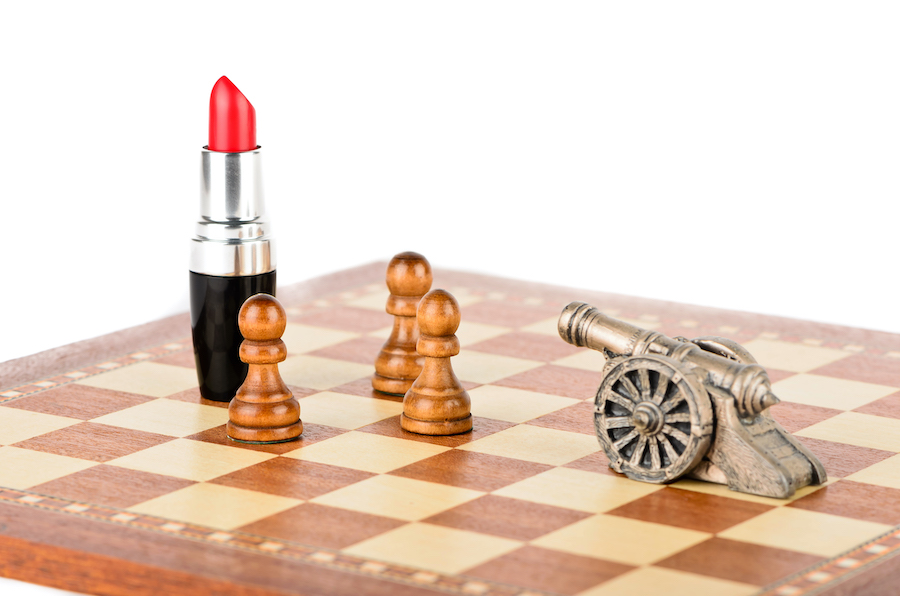
The use of lipstick, usually in the hot color of red, has not always found favor in society. In the US, it was downright frowned upon during prohibition and the Flapper era, as society women used the enhancing agent in defiance of stern moralistic groups at the time. A small group of women stood against these critics publicly. Their bravery in fighting for their civil liberty to use cosmetics eventually won the battle in the war against lipstick.
A Quick and Dirty History
The history of using a cosmetic to enhance our lips is fascinating, going back as far as five thousand years to the ancient Sumerians. Archeological evidence shows small containers filled with crushed gems mixed with oils and wax to create the desired effect. Many early cultures believed cosmetics and body paint were spiritual and induced healing.
Ancient Egyptians wore red lipstick to indicate their higher status and made their emollient from bugs, which is still an ingredient in many modern lipsticks today. Prostitutes in ancient Greece were required by law to wear red lip pigment to classify their station and had the dubious privilege of applying a mixture of sheep sweat, crocodile droppings, and red dye.
Great Britain’s Elizabeth l brought red lip makeup back into vogue during the 1500s, made from a better recipe of beeswax and plant-based red dye. However, red lipstick was almost banned in England by the seventeenth century, citing witchcraft and seduction. In Colonial Era Pennsylvania, a marriage could be annulled if, during the courtship, the prospective bride had sported artificially red lips.
This brings us to the late 1880s when the French perfumers Guerlain introduced their first lipstick brand, followed a decade later in the US with the Sears Roebuck company catalog that listed rouge meant for both cheeks and lips. From the late 1890s through 1920, lipstick was born in its now traditional form, as women applied it from a sliding metal tube invented in 1915 by Maurice Levy.
Morals and the Use of Cosmetics
Lipstick became a US cause célèbre at the start of the 1920s, inspiring the wrath of society moralists, namely the WCTU, or Women’s Christian Temperance Union, who believed only loose women of low morals would use enhancements. Thus began a war against cosmetics, namely lipstick, with the opponents consisting of a group of women who defied convention and fought for the freedom to choose how we present our faces to the world without censure and shame.
These women fought for the right to bear lipstick from the highest US court to the highest vehicle in the skies, wearing their badge of femininity proudly, achieving feats alongside men while packing their powder and red lips for all the world to see.
